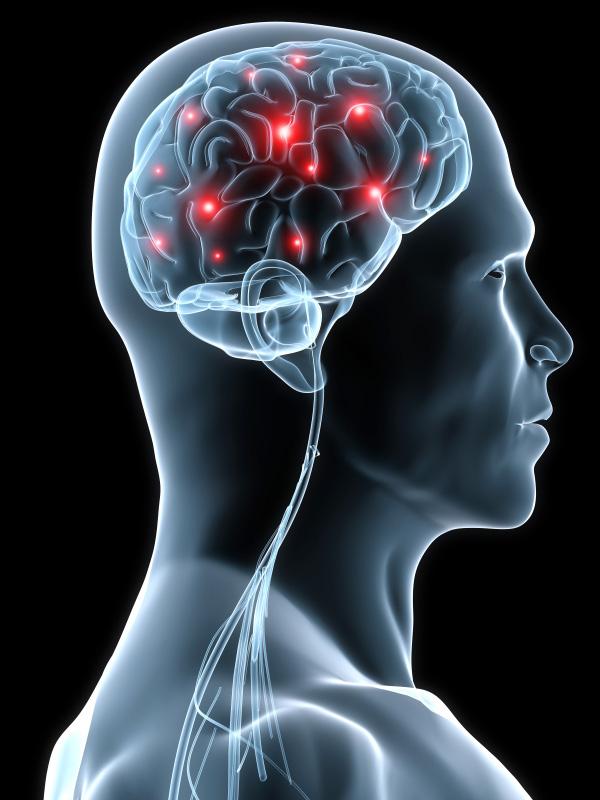
6 minute read
UNDERSTANDING the BRAIN
from Newsletter Q1 2014
by BrainHealth
BrainHealth Joins IDEAA Consortium with Harvard University
Twenty states have now passed laws legalizing or effectively decriminalizing the medical use of marijuana. Two of these have now legalized the recreational use of the drug. While policy is quickly changing, research on the effects of marijuana still lags behind.
Advertisement
The National Institute on Drug Abuse (NIDA) awarded a $500,000 grant to Francesca Filbey, Ph.D., director of Cognitive Neuroscience Research of Addictive Behaviors at the Center for BrainHealth, to fund her lab’s alliance with the largest marijuana research data collection undertaking to date, the Imaging Data in Emerging
K N O W B R A I NE R
Glorify Gatekeeping: Before diving headlong into a lengthy to-do list, zoom out to determine the best use of your unique skill set. Prioritize and find ways to delegate or eliminate tasks to maximize productivity and forward your mission.
Adults with Addiction (IDEAA)
Consortium. The Center for BrainHealth will represent the southern U.S. region in this prestigious partnership of four institutions that includes Harvard University; University of California, San Diego; and University of WisconsinMilwaukee.
The Consortium’s goal is to gain a greater understanding of a widely used, but relatively under-researched illicit substance: marijuana. “People have questions about the effects of marijuana, but no one has the science to say anything for sure,” explained Dr. Filbey. “As part of the Consortium, we will collect and pool brain imaging data from marijuana users and nonusers, focusing on regions that control rational decisions and emotional responses. In healthy individuals, these highly interconnected regions maintain a balance. However in individuals suffering from addiction, emotions and cravings can overturn reasoning and hijack decisionmaking.”
While it is well known that addiction can impact performance in active brain processes, little is known about changes in the brain’s resting state. Dr. Filbey’s team is charged with processing all Consortium imaging data investigating the brain at rest. Each site contributing and processing data helps answer the larger questions of marijuana addiction: What are the risk factors that leave some more vulnerable to addiction? What are the detrimental effects of marijuana? What factors promote brain healing and addiction recovery?

Each IDEAA Consortium site collects a uniform set of neuroimaging measures. Consortium sites will share study data on a central IDEAA server where it will be analyzed by a team of experts. The compiled results will culminate in the largest dataset of adolescent to emerging adult marijuana users.
“Researchers are often kept from answering some bigger questions due to the limitations of smaller neuroimaging studies,” says Tim McQueeny, a research fellow who recently joined Dr. Filbey’s team to help support the new initiative. “The Consortium reduces many of those restrictions.” Large datasets that are too costly for one research site to accrue are now available to all four institutions. Furthermore, the combined data represents all regions of the nation, and can therefore be generalizable. Perhaps most important, the IDEAA Consortium will give investigators the power to detect large and small differences, which will promote the discovery of new treatments.
“The Institute is helping people today – people with healthy brains, those who have suffered brain injury and those diagnosed with brain disease. At the same time, it is allowing us to deepen our research and fine tune the potency of our brain maximizing solutions,” said Sandra Chapman, Ph.D., Center for BrainHealth founder and chief director. “There is no other institution like this in the country.”
“The Brain Performance Institute would not be possible without our visionary benefactors who join us in the belief that with the right technologies and methodologies almost anybody has the power to change their mind,” explained Eric Bennett, Brain Performance Institute executive director.
Tailored programs based on decades of research are being scaled to serve people of all ages around the country and address some of the nation’s most pressing concerns including Alzheimer’s disease, concussions in athletes of all ages, education, and the reintegration of former military service members to civilian life.
Donor-supported programs are already in motion providing services in targeted areas.
$1 million from Joel Williams, Jr. and Linda Evans in honor of devoted wife and mother, Betty Lu, will support the Brain Performance Institute building capital campaign. Generous gifts from The Rowling Foundation and Emy Lou and Jerry Baldridge have advanced the campaign toward the additional $6 million in capital funds needed to break ground.
“We are very grateful to all of our donors and supporters,” reflected Kimber Hartmann, the Center’s development director. “Their generosity and shared passion for helping others through better brain health is enriching lives, the nation’s economy and the cognitive outlook for all future generations.”
Center for BrainHealth would like to thank the state of Texas, The University of Texas System and numerous private donors who have contributed to the Brain Performance Institute’s program expansion and building campaign including J. Baxter Brinkmann, Rebecca and Ron Gafford, Susan and Ralph Hawkins, HKS Architects, RGK Foundation, Sapphire Foundation, and The Tolleson Family Foundation.
Brainhealth Research
Faculty Chairs Honor Debbie and Jim Francis and The Meadows Foundation

For their enduring commitment and generous support, the Center for BrainHealth established two named chairs in honor of Debbie and Jim Francis and The Meadows Foundation. Daniel Krawczyk, Ph.D. and Bart Rypma, Ph.D. hold the Debbie and Jim Francis Chair in BrainHealth and The Meadows Foundation Chair in Behavioral Brain Science, respectively. Both have made significant research contributions to advance the Center for BrainHealth’s mission to understand, protect and heal the brain.
“The Meadows Foundation Chair will provide a tremendous opportunity to deepen our understanding of changes that take place in the aging brain,“ said Dr. Rypma. “It will also aid in revealing the complex underpinnings of multiple sclerosis and new avenues to improve treatment outcomes.”

“Debbie and Jim have been inspiring forces for a long time,” said Dr. Krawczyk. “Holding this chair in their name is really a permanent tribute to their efforts and all of the treatments, interventions and trainings that will result because of it. By creating new knowledge, we are improving peoples’ lives and their brain health.”
Bipolar Study Seeks to Add Side-Effect Free Solution to Brain Disorder
Bipolar disorder is one of the most prevalent manic-depressive illnesses affecting approximately 5.7 million adult Americans every year. It causes unusual shifts in mood, energy, activity levels, and hinders the ability to carry out daily tasks. Although it cannot be cured, it can be treated effectively. A new Center for BrainHealth study will investigate the effects of the Center’s high performance brain training program called SMART on the mental health and cognitive performance of individuals who have been diagnosed with the disorder. The study is being funded by friends of the Center, Debbie and Bill Dunlap. “We realize that individuals with bipolar disorder are often very bright and creative,” explained Debbie Dunlap. “We want to help maximize their potential. Our desire is to see them achieve greater success in life through the SMART program.” Although not previously studied in bipolar disorder, SMART has been scientifically proven in several populations including healthy aging adults, those with traumatic brain injury and teenagers. This novel pilot study will measure changes in cognition, real-life functionality, and brain imaging data. Erin Venza, M.S. CCC-SLP, the clinician spearheading the study, explained, “Working memory and attention are common complaints in individuals with bipolar disorder. We believe that this training will greatly enhance cognitive and neural functioning in this group of adults and also incite white matter generation.”
Worldwide Presentations Highlight BrainHealth Research
Each year Center for BrainHealth researchers travel the nation and the world to share their innovative research and learn about discoveries occurring at other institutions. This spring, Sina Aslan, Ph.D., adjunct assistant professor and BrainHealth collaborator, will present two abstracts in Milan, Italy at the International Society of Magnetic Resonance in Medicine (ISMRM): Shorter term aerobic exercise improves brain perfusion, cognition, and cardiovascular fitness in aging by researchers Sina Aslan, Ph.D., Sandra Chapman, Ph.D., Jeffrey Spence, Ph.D., Laura DeFina, Ph.D., Nyaz Didehbani, Ph.D., & Hanzhang Lu, Ph.D., and Neural mechanisms of brain plasticity with cognitive training in healthy seniors by researchers Sina Aslan,Ph.D., Sandra Chapman, Ph.D., Jeffrey Spence, Ph.D., Molly Keebler, M.S., CCC/SLP, Nyaz Didehbani, Ph.D., & Hanzhang Lu, Ph.D. Director of pediatric brain injury programs Lori Cook, Ph.D., and postdoctoral fellow Asha Vas, Ph.D., will present the abstract Frontal Lobes and TBI: Assessment and Training of Integrative Higher-Order Cognition at the International Brain Injury Association’s 10th World Congress on Brain Injury in San Francisco, CA. Doctoral student Justin Eroh will present The Effects of Cue Modality on an Object Memory Task at the Cognitive Neuroscience Society annual meeting in Boston, MA, and doctoral student Ariel Ketcherside recently presented Multivariate Analyses of Alcohol Use Disorder Symptoms and Personality Traits in Cannabis Users at the Texas Research Society in Alcoholism in San Antonio,TX.






